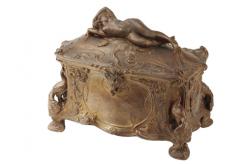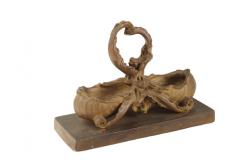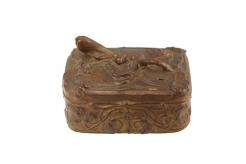




Author: Eduards Kļaviņš, Dr. habil. art.
It is quite clear that the general iconography of Art Nouveau has already been established, as exemplified in the works by such early exonerators and promoters of this style as Robert Schmutzler[1], Stephan Tschudi Madsen[2] and Mieczyslaw Wallis[3]. These studies are first of all typological descriptions of ornamental motifs and explanations of their symbolical meanings. These motifs along with Art Nouveau imagery are self-evidently mentioned and indicated in connection with other topics in more recent general overviews of the style (Jeremy Howard[4], Gabriele Fahr-Becker[5]). Symbolic meanings of particular floral, faunal or anthropomorphic motifs have been successfully established; these meanings are generally most related to the general semantics of the style (anti-Historicism, glorification of nature and naturalness, the so-called biological romanticism) and defined in the literature dealing with this style. If Art Nouveau is interpreted as not just the style of applied arts and architecture but also as a phenomenon influencing painting, graphic arts and sculpture, at least their decorative versions, then iconography would include also more developed subjects and corresponding narratives. In this case these themes belong also to the Symbolist iconography and the problem arises of how to differentiate between these trends. Depending on each author’s position, in the histories of these two inclusive phenomena there is either a tendency to merge and interpret them as phenomena of the same type (Hans Hofstätter[6], Werner Hofmann[7]) or make a distinction between them, pointing out just the common elements (Robert Goldwater[8], Mieczyslaw Wallis, Klaus-Jurgen Sembach[9]). To minimise the unavoidable vagueness of interpretation, the author of this essay adopts the criterion allowing to delineate more clearly the boundaries of the iconographical material in question. Thus the specificity of Art Nouveau is located in a certain kind of dogmatic stylisation and decorative ornamentalisation to which various functional or thematic objects (buildings, applied art items, books, fonts, paintings, human figures, landscape motifs, etc.) were subjected. From the aspect of form, this was a rhythmical arrangement of biomorphic (asymmetrical, sinuous, wavy) lines and volumes, semantically subordinated to the notion of “biological romanticism” developed by Robert Schmutzler. In other words, this meant to aestheticise biological phenomena, in a wider sense – primeval natural powers and “free nature”. This assumption allows us to include in the Art Nouveau iconography firstly those iconic elements that visually and semantically most correspond to the style’s general biomorphism. Of course, this applies just to the initial, original specificity of the style, as additions to the later biomorphic stylisation and changes leading towards geometric abstraction, rhythms of straight and broken lines, testified to the transformation of the style, anticipating later variations of form (Art Deco, Cubism, Functionalism, Constructivism).
More information will be available in the virtual exhibition, which will be established till April 2016.
[1] Schmutzler, R. Art Nouveau – Jugendstil. Stuttgart, 1962.
[2] Madsen, S. T. Art Nouveau. London: McGraw-Hill, 1967
[3] Wallis, M. Jugendstil. Warschau: Arkady, 1974.
[4] Howard, J. Art Nouveau. Manchester: Manchester University Press, 1996.
[5] Fahr-Becker, G. Art Nouveau. Cambridge: Ulmann, 2007
[6] Hofstätter, H. Geschichte der europäischen Jugendstilmalerei. Köln, 1963.
[7] Hofmann, W. Turning Points in Twentieth-Century Art: 1890–1917. London, 1969
[8] Goldwater, R. Symbolism. London, 1979.
[9] Sembach, K-J. Art Nouveau. Köln: Taschen, 2002.